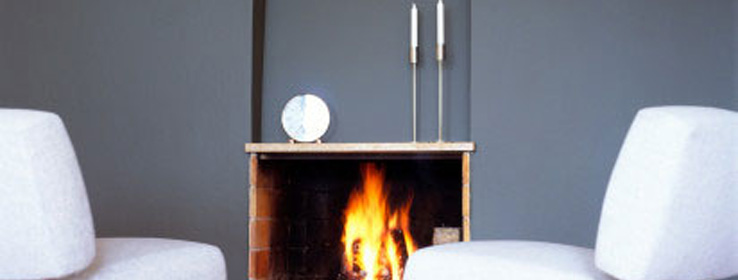The surprisingly complex neutral that's taken the design world by storm.
The gray trend in interior design is going strong. For a color that has many negative (or at least drab) connotations attached to it – Webster's Dictionary defines it as "dull," "dreary," "dismal," "old" and "vague" – gray has recently proven to be one of the most exciting hues in interior design. No wonder: There are myriad shades and tints of gray available, creating limitless possibilities for use in decorating. But how can you be sure you're using gray to its fullest potential? Here are some tips for incorporating it into your designs.
Choose your gray carefully to suit the mood you want to achieve. For a supposedly neutral color, gray can have an enormous impact on the tone of a room. Grays with brown or green undertones give a room a warmer, comfier tone than those with hints of blue or purple. Charcoal gray can lend the sophistication and mystery of black, without the gloom. And shiny or silvery gray can ooze cosmopolitan glamour.
Use gray judiciously. Too much of it could make a room look bland or too subdued. But on one wall, or in countertops and appliances, it can add calm, gravitas or even a sexy, urban-industrial feel, depending on the shade you choose.
Contrast it with a striking color (or colors) for ultimate impact. Pair light gray with pastels for a feminine look or dark gray with darker colors to make the room feel more masculine. Use gray to showcase any favorite color. "The one thing I like and appreciate about gray is that it is the true neutral color," says Masami Overstreet of mail-order company Wisteria. It won't affect other colors and allows their true color to show. For dramatic effect, use gray walls as a backdrop for furniture and accessories in bold, bright colors.
Experiment with textures. Furnishings retailer West Elm currently sells wooden furniture with gray finish, including coffee tables, beds and wood-framed mirrors. Not only does a gray finish lend versatility to furniture, it makes the natural grain of the wood stand out. And gray silky fabrics can have a sheen and fluidity that adds chic to any room. Nebraska-based designer Aaron Carlson says that smoother gray surfaces have a more formal feel, while rougher textures tend to seem more informal.
Best of all, since gray complements so many colors, a room with a gray foundation can be given a whole new look just by replacing the accessories with new colors. So get creative with it, and who knows – maybe the next edition of Webster's will have a whole new definition for "gray."










